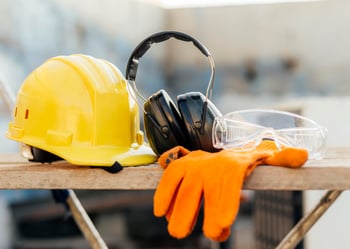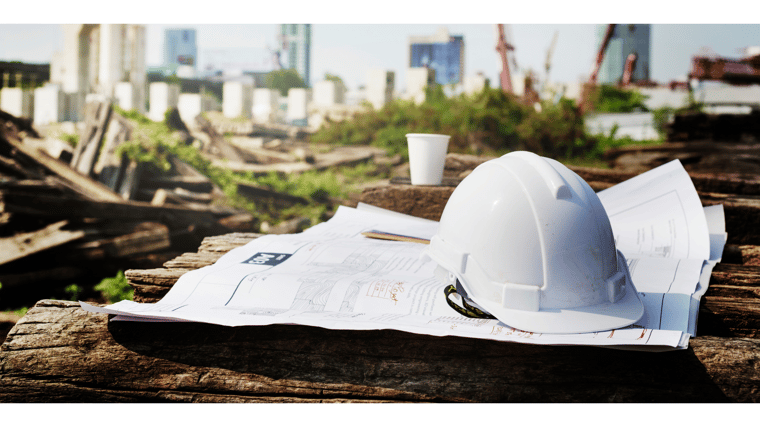As we enter 2024, the construction industry is undergoing a transformative phase, embracing innovation and sustainability to meet the challenges of a rapidly evolving world.
As digital technologies, sustainable practices and safer work environments become the norm, the industry is poised for a more efficient, resilient and environmentally conscious future. Construction professionals who embrace these trends will stay ahead of the competitive curve and contribute to building a better world for generations to come.
Let’s explore four of the considerations shaping the construction industry in 2024.
Read: The Top 7 Cybersecurity Trends for 2024
1. Digital Transformation and Automation
The construction sector is experiencing a digital revolution with technologies like building information modeling (BIM), virtual reality (VR), drones and 3D printing. These tools are becoming integral to project planning, design and execution, so companies that adopt these technologies can improve their performance and operational growth in the long run.
BIM, along with VR and drones, can help make projects more accurate – they provide a detailed 3D model of a building so engineers can get a complete picture of the physical and functional characteristics of the building, as well as any potential problems, in real-time before, during and after inspections. 3D printing allows for innovative and customizable designs for complex structures. These tools help streamline collaboration among project stakeholders, enhance efficiency with realistic project schedules and reduce errors in design and construction.
Automation is also transforming construction sites by enhancing productivity and quality, and it’s addressing the labor shortages, which we discuss below. Augmented reality (AR) provides on-site workers with real-time information, instructions and visualizations, facilitating better communication and training. Robotics can’t get tired or make costly mistakes, so they help with repetitive labor-intensive tasks like bricklaying, reducing project timelines, errors and accidents.
2. Prefabrication, Sustainability and Smart Buildings
Prefabrication methods are gaining traction for their efficiency, cost-effectiveness and sustainability. These techniques involve assembling building components off-site before being delivered and assembled on-site, reducing costs, minimizing waste and leading to faster project completion. It also increases sustainability and eco-friendly measures.
With two-thirds of the population predicted to live in cities by 2050 and an increase in environmental regulations, the construction industry is making substantial strides towards sustainability. Green building materials, energy-efficient designs and renewable energy integration are becoming standard practices that reduce environmental footprints. Many construction firms look at using fixtures and plumbing made of recycled materials instead of traditional materials. Engineered cementitious composite (ECC) and engineered timber are new, more advanced materials that are stronger, longer lasting and more effective.
The era of smart buildings is also here. The Internet of Things (IoT) devices and sensors are being integrated into construction projects. From intelligent HVAC systems to advanced security features, smart buildings optimize resource usage and improve occupant comfort, making buildings more responsive, efficient and connected. IoT sensors can also measure noise levels and energy for further sustainability efforts.
Read: 4 Ways Technology is Holding Your Construction Firm Back
3. Labor Shortages and Supply Chain Issues
With 85 percent of construction firms trying to fill positions, labor shortages continue to plague the construction industry due to recruitment struggles, a high turnover rate and an aging workforce – for example, over 40% of the U.S. construction workforce is expected to retire in the next decade. This, in turn, affects construction project timelines, customer satisfaction and costs.
Though automation can help to a degree, some firms are finding that utilizing technology-driven solutions can help recruit a younger tech-driven generation; they can focus on more fulfilling work while automation handles repetitive tasks. Training and certificate programs, performance-based incentives and competitive wages can also help motivate recruits to stay long-term.
High material costs and low availability, as well as geopolitical tensions, continue to create supply chain disruptions in construction projects throughout 2024. Many construction firms are looking to navigate relationships with material suppliers and warehouses to offset production and transportation delays and set prices early.
4. Increased Worker Safety
The traditional mindset of finishing projects earlier and increasing profit margins can sometimes create a hazardous work environment. That’s why construction firms are focused on creating safer work environments.
One way to offset risks and errors is improved training, better safety guidelines and robust safety inspections. AI can help detect potential hazards, and wearable devices like GPS trackers and biometric sensors can track worker activity to ensure they stay safe. Creating a safer work environment can help recruit more workers, too.
Read: AI for Your Industry: Construction and Design
Thriveon Can Help Your Construction Firm
Thriveon is a managed IT company dedicated to helping clients turn IT into a significant business driver. We offer a range of services for various industries, including design and construction.
For more information on how we can help, schedule a meeting with us now.

